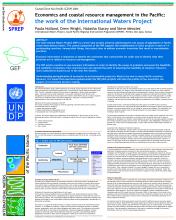Country summary report - Forestry Division - Samoa

Island and Ocean Ecosystems
Available Online
Leavasa, Aukuso
,
Pouli, Tolusina
Samoa lies in the southwest Pacific between latitudes 13° 25S and 14º 05S and longitudes 171° 23W and 172° 48W. It is comprised of two main islands, seven smaller islands (two of which are inhabited), islets and rocks. The total land area of Samoa is approximately 282 852 ha. The total population recorded from the last census in 1991 was 161 298; however, the Department of Statistics has estimated the total population in 1998 to be 168 027. The climate is tropical, tempered by the ocean environment, and marked by a distinctive wet season (November - April) and a dry season (May - October). Samoa has the most diverse angiosperm flora in tropical Polynesia, with 298 genera and nearly 500 species, with a very high proportion (32%) of endemic species (Whistler 1992). Syzigium is particularly well represented among the tree genera with 16 species, 9 of which are endemic. Samoas vegetation can be divided into 19 plant communities arranged in five broad categories: littoral vegetation, wetland vegetation, rainforest, volcanic scrub and disturbed vegetation. The most common littoral forest is that dominated by Barringtonia asiatica. Mangroves are best developed on the south coast of Upolu, but there is a small, unique mangrove forest dominated by Xylocarpus moluccensis on the south coast of Savaii. There are four rainforest types based on elevation, viz. coastal, lowland, montane (ca. 500-1 000 m) and cloud forest (> 1 000m). Low coastal forests are dominated by Diospyros and Syzigium spp. Five associations of lowland forest can be distinguished based on dominant tree species, the most common being dominated by Pometia pinnata, although lowland forest cover has declined markedly in recent decades. Remaining forests cover 37 percent of the total land of Samoa. Of this, indigenous forests comprise 36 percent and forestry plantations cover one percent (1%). The Forestry Division estimates that, of the remaining indigenous forest, only 5 percent is merchantable and 31 percent is non-merchantable. The major areas of commercial forest occur on the larger island of Savaii with small areas on Upolu.
